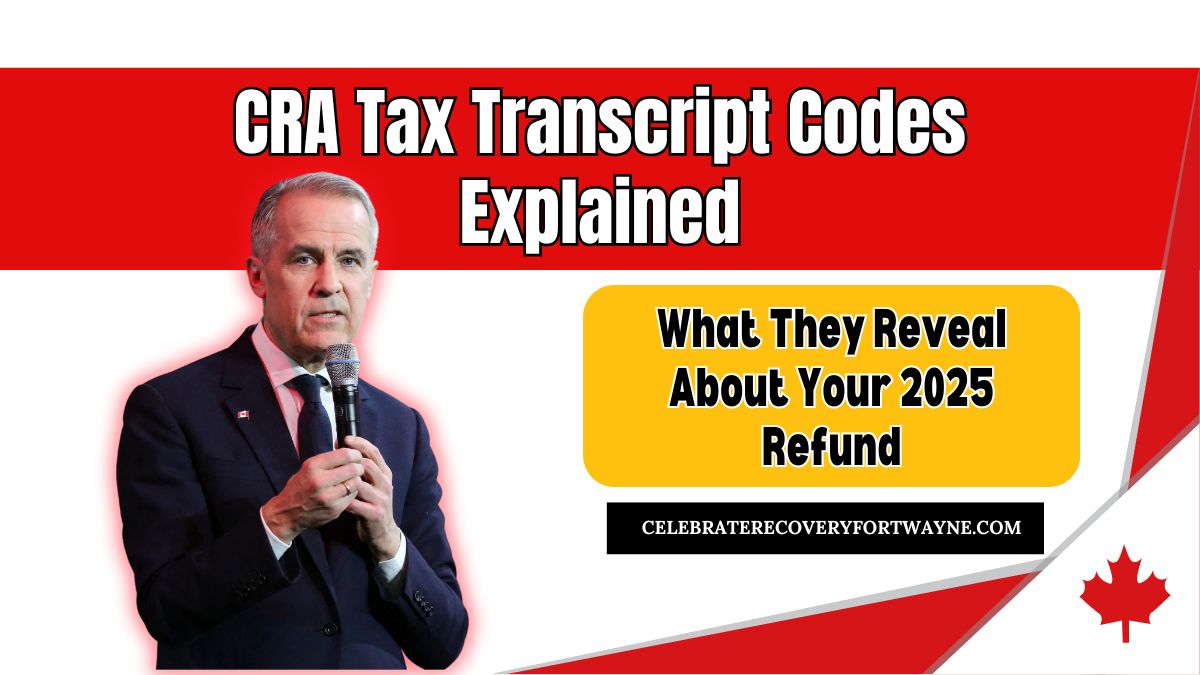Navigating the Canada Revenue Agency (CRA) tax transcript can feel like an overwhelming task, particularly due to the multitude of codes used to indicate different statuses of your tax return.
These codes are essential for tracking the progress of your return, identifying potential issues, and taking action if needed.
As we approach the 2025 tax season, it’s important to familiarize yourself with these codes so you can address any concerns proactively.
In this guide, we will break down the most frequently encountered CRA tax transcript codes, explain what they mean, and offer guidance on how to respond if they appear on your transcript.
Why CRA Tax Transcript Codes Matter
CRA tax transcript codes offer valuable insights into the status of your tax return.
From the moment your return is filed to when your refund is issued, these codes help you track the progress and identify any areas that may require attention. Understanding them can save you time and prevent unnecessary stress.
Common CRA Tax Transcript Codes and Their Meanings
Here is a breakdown of the most common CRA tax transcript codes you may encounter:
| Code | Description | Implication for the Taxpayer |
|---|---|---|
| 150 | Return Filed and Assessed | No action needed; your return has been successfully processed. |
| 151 | Audit Initiated | CRA is reviewing your return; further documentation may be needed. |
| 152 | Return Processing | Your return is still under review; no immediate action required. |
| 420 | Detailed Audit Examination | Your return has been selected for an audit; additional documentation may be required. |
| 480 | Refund Issued | The CRA has processed and approved your refund. |
| 826 | Reassessment Issued | Your return has been reassessed, possibly due to adjustments or errors. |
Detailed Explanations of Common CRA Tax Transcript Codes
1. Code 150: Return Filed and Assessed
This is one of the most commonly encountered codes. It signifies that the CRA has received and assessed your tax return.
- Implication: No action is required from you unless another code appears indicating a potential issue.
- Tip: If you’re expecting a refund, it will likely be processed shortly after this stage.
2. Code 151: Audit Initiated
If you see this code, the CRA has flagged your return for review. This could be due to discrepancies or certain claims that require further verification.
- Implication: You may need to provide additional documentation to support your tax claims.
- Action: Monitor your CRA account closely and be prepared to provide requested information if necessary. Ignoring this request could lead to penalties or additional taxes owed.
3. Code 152: Return Processing
This code indicates that your return is still under review, but no final decision has been made yet.
- Implication: No action is needed at this stage. The processing time will depend on the complexity of your return.
- Tip: You can periodically check your CRA account for updates regarding your return status.
4. Code 420: Detailed Audit Examination
This code means your return has been selected for an in-depth audit.
- Implication: The CRA will closely examine your income, deductions, and credits.
- Action: Gather all relevant tax documents, receipts, and proof of income. Be ready to submit them if the CRA requests further details.
5. Code 480: Refund Issued
Good news! If you see this code, it means your tax refund has been approved and processed.
- Implication: Your refund should either be deposited into your bank account or mailed to you within a few days.
- Tip: If you don’t receive your refund within the expected timeframe, check your CRA account or contact them for assistance.
6. Code 826: Reassessment Issued
A reassessment means that the CRA has reviewed your tax return and made adjustments to your income, deductions, or credits.
- Implication: This could result in either an additional tax bill or a refund.
- Action: Review the reassessment notice carefully. If you disagree with the changes, you have 90 days to file a Notice of Objection.
How to Check Your CRA Tax Transcript and Codes
To stay updated on the status of your tax return and view transcript codes, follow these steps:
- Log into your CRA account: Access the CRA My Account portal.
- Navigate to “View My Tax Return”: This section displays the current status of your return.
- Look for transcript codes: If you encounter an unfamiliar code, refer to this guide or check the official CRA explanation.
- Follow up if necessary: If a concerning code, such as an audit or reassessment, appears, it’s important to contact the CRA for clarification.
Common Issues and Solutions
What if my refund is delayed?
- Possible Cause: If your return is under review (Code 152), it may be delayed.
- Solution: Regularly check your CRA account for updates or contact them directly if needed.
What if I disagree with my tax reassessment?
- Possible Cause: A reassessment (Code 826) may have been issued due to errors or adjustments.
- Solution: You can file a Notice of Objection within 90 days to dispute the reassessment. Gather your supporting documents and consult a tax professional if necessary.
What if I’m selected for an audit?
- Possible Cause: Codes 151 or 420 indicate that your return is under review or being audited.
- Solution: Ensure you have all relevant tax records on hand. Respond promptly to any CRA requests to avoid complications.
Understanding CRA tax transcript codes is essential for tracking the status of your tax return and addressing any issues promptly.
By familiarizing yourself with the common codes, you can ensure that you’re prepared for each step of the process, whether it’s providing additional documentation or reviewing a reassessment notice.
Always stay proactive and maintain accurate records to avoid complications down the line. If in doubt, don’t hesitate to contact the CRA for further clarification.




